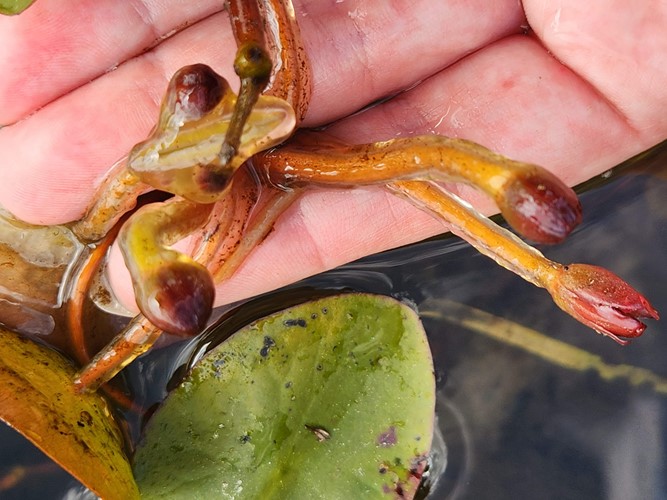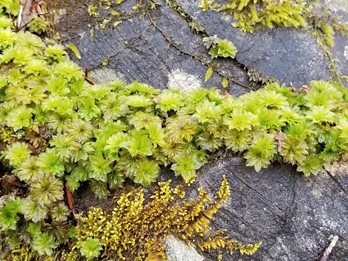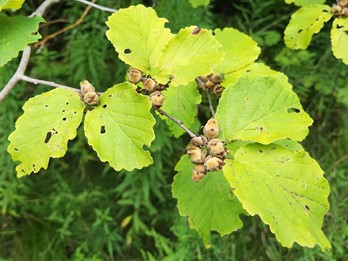Brasenia schreberi (Watershield)
Watershield is an aquatic rooted perennial with small, oval floating leaves and buoyant stems. Small purple flowers extend couple centimeters above the water. Each individual flower blooms for only 2 days. This plant grows in lakes and ponds usually close to shore. Other plants often growing along with it are American bur-reed, waterlily and spadderdock.
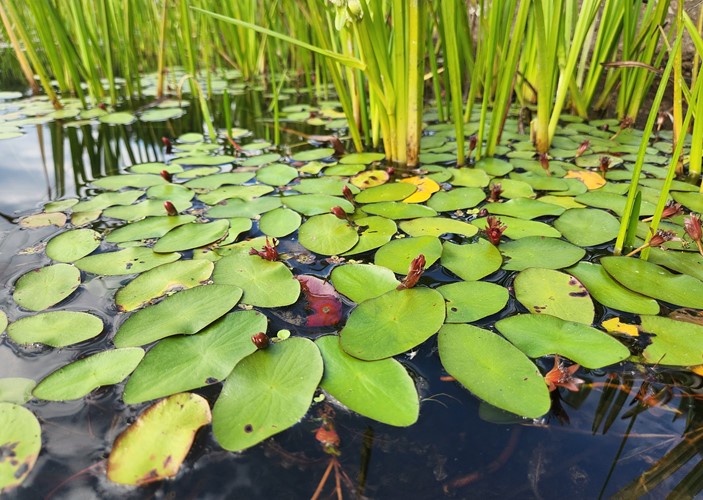
Flowers remain open for two days. The first day, sepals and petals open and bend downward and pistils emerge (stamens are present but are not functional). The female reproductive receptor (stigma) becomes receptive to pollen. At night, the flower stalk bends and the flowers submerge under water. On the second day, flowers emerge from the water again, now with the pistils retracted and filaments (stamen stalks) elongated. Anthers are now mature and open, ready to release pollen. This process allows for cross-pollination by wind.
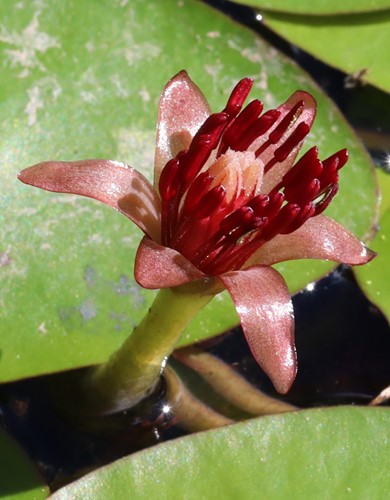
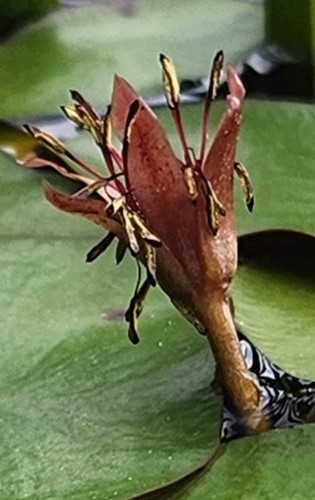
Underwater parts of the plant are covered with a protective gelatinous substance (sheath) thought to prevent attachment of certain aquatic organisms. This includes flower buds that develop under water until they are ready to emerge and open.
